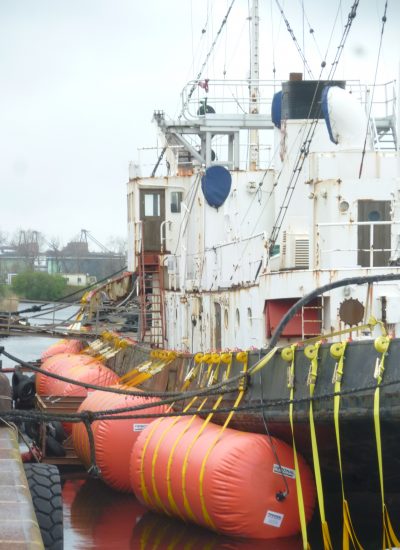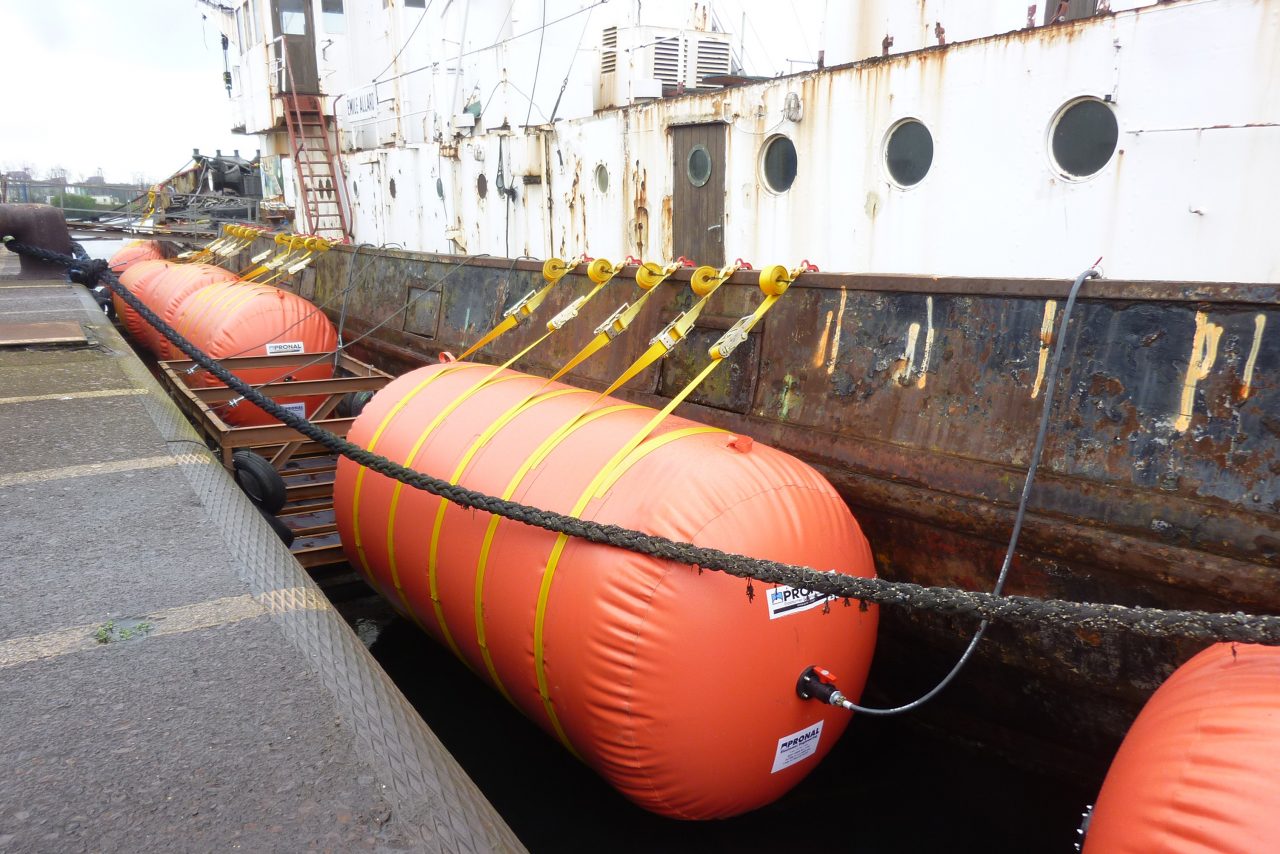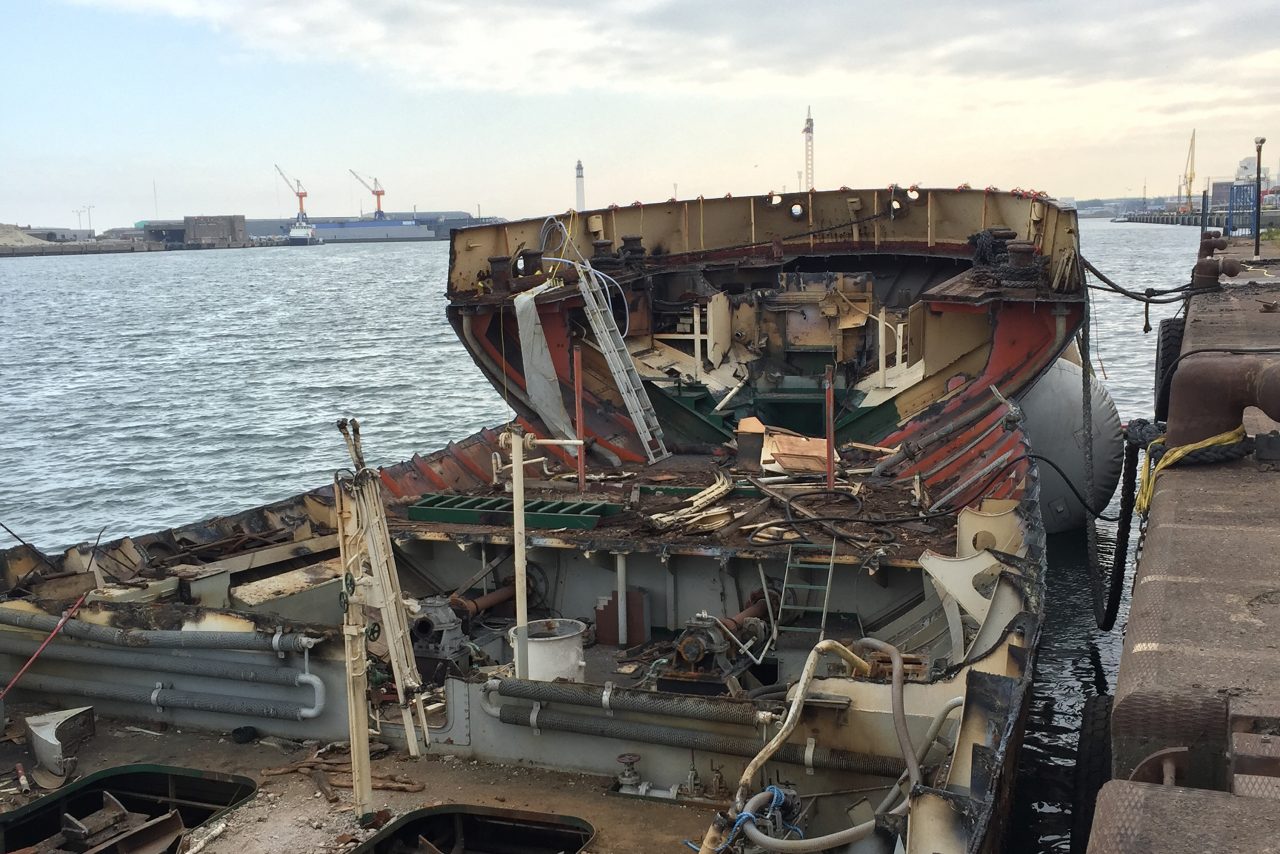Around the world, between 800 and 1000 end-of-life ships are dismantled each year. This dismantling makes it possible to recover, treat and recycle their metals and their equipment for reuse. Thus, the abandonment and immersion of vessels are limited. Shipbreaking is not without risk for the man and the environment. Indeed, the boat is made up of many hazardous materials, the management of which requires supervision.
There are different places to carry out this operation, in particular docks or grounding basins. But the rental of these yards has a significant cost that varies according to the size and type of vessel. Therefore, some ship owners prefer to dismantle afloat. They must then use inflatable lifting systems to refloat a boat.
Dismantling of the Emile Allard navaid vessel
In the north of France, at the port of Dunkirk, the RB Diag company planned to dismantle the Emile Allard navaid vessel.
Built in 1949, the ship had many weaknesses, particularly in terms of the hull in very poor condition. After analysis and diagnosis, the company first decided to strengthen certain parts of the ship. But despite this intervention, the whole was still very fragile.
Limited in time and in the budget, it was not possible to hire a beaching basin and a demolition dock. Therefore, afloat dismantling was the most suitable solution for this project.
To ensure the dehaling and deconstruction of the boat afloat, RB Diag was looking for a maintenance and flotation solution. The solution had to be:
- flexible so as not to damage the shell which is already in poor condition,
- and strapped around the perimeter of the vessel for perfect stability

The Pronal solution to refloat a boat
Therefore, the company RB Diag called on Pronal to provide an inflatable solution and secure the vessel’s buoyancy.
We have provided:
- 18 RDF lifting units (or buoyancy reserve) with a capacity of 10,000 L,
- and 4 RDF of 32,000 L.
The inflatable systems dedicated here to refloat a boat have been strapped all around the hull. Once inflated and properly hooked, they were able to tow the vessel safely to the dock. Without this essential and rapid device to be implemented everywhere, there would have been a great possibility of damage.


Conclusion
Thanks to the collaboration between Pronal and DB Diag, the dismantling solution from this inflatable system could be patented. The RDF buoyancy reserves were essential to keep the vessel afloat and to carry out the project.
Speakers
Our other projects
Would you like more information on this project?
Vous pouvez contacter nos experts qui sont adeptes de ce genre de projet pour avoir plus d’informations et être conseillé